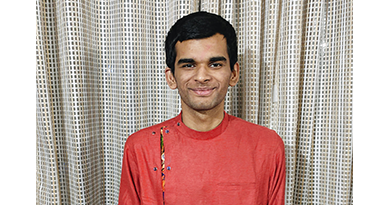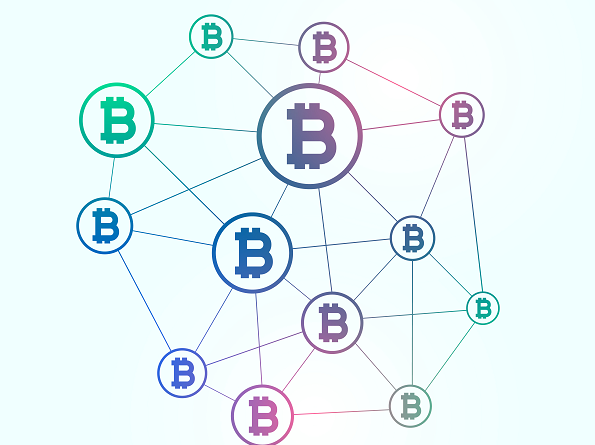What does a UX designer do?
Contents
1. What does a UX designer do
2. What kind of projects do they work on
3. Why is it important
4. How to become a UX designer
What does a UX designer do
UX designers aim to make everyday products, services, and technology as user-friendly as humanly possible, they humanize technology. They do this by engaging in ‘design thinking’, which integrates the user’s desires with technical feasibility and business value
What is Design Thinking?
Design thinking is a unique approach used for practical and creative problem-solving. It’s primarily based on methods and processes used by designers. However, it’s evolved from a variety of fields such as architecture, engineering, business and others. Design Thinking is unequivocally user-centric. It focuses on humans first, it seeks to understand people’s needs and come up with solutions for them. It’s also what’s known as a solution-based approach to problem-solving. Design Thinking starts with the Design Thinking Process.
The Design Thinking Process
The Design Thinking process consists of a number of important phases and principles. Let’s have a look at the four core principles of Design Thinking
The human rule: All design activity is inherently social in nature. Any social innovation will result in us returning to the “human-centric” point of view.
The ambiguity rule: Ambiguity is inescapable, it cannot be removed or simplified. Be open to different designs and mindsets. Experimenting and pushing the limits of your knowledge and ability is imperative if you have to see things differently.
The redesign rule: All design is redesign. Tech and social circumstances are constantly changing and in motion. However, basic human needs remain consistent. We only redesign the means of fulfilling these new needs.
The tangibility rule: Making ideas tangible through the form of prototypes allows designers to communicate them more effectively. Remember, Tony Stark’s first ever Iron Man armour prototype was built in a cave and disassembled during its first flight. Yet, he was able to learn from it!
The 5 phases of Design Thinking
Based on the four principles, Design Thinking is divided into 5 phases as shown in the chart below:

Phase 1: Empathise
Empathy is the critical starting point for Design Thinking. This first stage is similar to a first date; it’s the process of getting to know the user. You understand their needs, wants, and objectives. This includes observation and engaging people in the hopes of understanding them on an emotional and psychological level. Observation can be done through focus groups and interviews. Through this phase, the designer sets aside any assumptions about the user and garners new and real insights.
Phase 2: Define
This phase is all about pinpointing and defining the issue. You use all the information you learned in phase one and you try to make sense of it. You’ll answer questions like:
– What difficulties are your users coming up against?
– What are the visible patterns?
– What is the bigger user issue that the team needs to solve
Towards the end of the define phase, you will have a clear understanding of what the problem is and where it lies. It’s always important to look at issues from the perspective of the user. It’s not “we need to…” it’s always “My user needs…”
Phase 3: Ideate
Now that you have a deep insight in regards to your users and a clear problem statement in mind, it’s solution time. This is where the magic happens, get your creative hat on because nobody judges you in the ideation zone. Designers use brainstorming, mind mapping, and provocation to come up with as many new angles and ideas as possible. By the end of ideation, you’ll have a few ideas you will take forward.
Phase 4: Prototype
This is the phase where you experiment and turn ideas into tangible products. This is an imperative phase as you’re putting each solution to the test and exposing any flaws and constraints. Through this stage, the proposed solutions will be accepted, improved, redesigned, or rejected depending on how they operate in prototype form.
Phase 5: Test
The final phase post-prototype is the testing phase. This may seem like the end of the Design Thinking process but it’s not. The testing phase results in you going back to previous phases as you have more insight into the original problem statement and can redefine it or come up with newer ideas.
This was just a brief overview of the UX design process. The tasks will depend on the needs and size of the company.
However, no matter what product the designers are designing, they will always ask themselves these questions:
- Is the product usable? Is it logical, self-explanatory, and easy to use?
- Does the product or service solve an existing user problem?
- Is it accessible for different categories of users? You can read more about accessibility in the design below.
- Is the product or service desirable? Does it create a positive experience which the user would be happy to repeat?
We’ve become well versed in how UX designers formulate ideas, now let’s have a look at how these ideas are actually implemented in real-world projects.
What kind of projects do UX designers work on?
The field of UX design is quite wide, thanks to the constant growth of the tech industry. UX designers have a variety of projects to choose from. Here are just a few of the real-world applications for UX design.
Virtual and Augmented Reality (VR) and (AR)
VR has taken the world by storm ever since it became more accessible to the masses. The global VR market is expected to be worth a whopping $27 billion by 2022. UX designers will be required to design highly immersive for a growing user base. A few summers ago, the world collectively lost its mind over the release of Pokemon Go. Pokemon Go allowed many to achieve their childhood dreams of becoming a Pokemon trainer. The success of Pokemon Go pulled augmented reality to the mainstream and it’s been growing ever since. UX designers are learning to adapt their approach to ensure that all the latest tech is accessible and increasingly user-friendly.
Service Design
UX design isn’t only about tangible and digital products and services. Experiences also need to be designed, this is where service design enters the picture. Wikipedia explains that “Service design is the activity of planning and organizing people, infrastructure, communication and material components of a service in order to improve its quality and the interaction between the service provider and its customers. Service design may function as a way to inform changes to an existing service or create a new service entirely.”
The process you would go through to purchase everyday items like coffee, use public transport, or stay in a hotel all occurs the way it does because of service design. Furniture giant IKEA purposely designs their stores like mazes so users are forced to go through the entire store, genius service design work. The service design methodology is very similar to classic UX design.

Website, apps, and software design
The usability of a website, mobile app or piece of software will establish its success on the market. UI and UX designers collaborate together to ensure a smooth and flawless online experience for the user that keeps them wanting more. Every conceivable website from e-commerce to dating apps, from CRM software to web-based email clients. Every online journey you go through has been deliberately designed by a UX professional.
Voice Design
Voice user interfaces like Siri, Alexa, and Google have become an integral part of many peoples lives. AI-based voice user interfaces have revolutionized the way we interact with technology. A few years ago asking your phone a question and it actually replying to you was something we only saw in the movie Iron Man! Now, 40% of adults use voice searches on a daily basis. ComScore estimates that, by 2020, 50% of all searches will be voice-based. UX designers have a crucial role to play in the rise of voice. Products like Amazon’s Alexa can only maintain or improve their level of success if they are user friendly and accessible.
Why is it important?
The value of UX design is clear; not only for the user but also for the business who design the user experience. Good UX encourages the user to go about their daily lives as effortlessly as possible. We’re surrounded by UX from the moment we wake up with our alarms, scrolling through apps to read the latest news, checking your calendar for the day’s tasks, or listening to music on the way to work. The reason we’re able to do all that is due to excellent UX design. When designing experiences, UX designers try to bring value to all kinds of users. They accomplish this by using inclusive design, also known as universal or accessible design.
Universal Design (UD)
Motivation speaker Molly Burke explained that universal design is all about “designing and building everything to be accessed, enjoyed and understood to its fullest extent, by everyone, regardless of their size, their age, their ability, or their perceived ability.”
(UD) Adheres to 7 key principles:
1. Equitable use: The design is useful and marketable to people with diverse abilities.
2. Flexibility in use: The design accommodates a wide range of individual preferences and abilities.
3. Simple and intuitive use: Use of the design is easy to understand, regardless of the user’s experience, knowledge, language skills, or current concentration level.
4. Perceptible information: The design communicates necessary information effectively to the user, regardless of ambient conditions or the user’s sensory abilities.
5. Tolerance for error: The design minimizes hazards and the adverse consequences of accidental or unintended actions.
6. Low physical effort: The design can be used efficiently and comfortably and with a minimum of fatigue.
7. Size and space for approach and use: Appropriate size and space is provided for approach, reach, manipulation, and use regardless of user’s body size, posture, or mobility.
Good design translates to good business. Good design results in increased levels of customer satisfaction, which helps build brand loyalty. A user will only return or reuse a product if they have an enjoyable experience.
The Design Management Institue carried out a study which stated that design-driven companies consistently outperformed the S&P 500 by 219% over a 10 year period. A study by Adobe found that including design thinking in business creates a competitive advantage. Design-led and focused companies reported 50% more loyal customers, 41% higher market share, and 46% competitive advantage overall. UX designers are literally shaping the world around us as universal design is beneficial to everyone.
How to become a UX designer
As you’ve read through this article, you have probably realized that UX design is an incredibly diverse and varying field. To find success in UX design you must have the combination of a diverse skill set and a passion for user-centric design. The good news is that anyone can enter UX design regardless of what field they had their formal education in. Good UX designers usually share some similar characteristics such as the following:
– An ability to think both creatively and analytically
– A strong gift for empathy and a user-first mindset
– An interest in technology and how humans interact with it
– Strong problem-solving skills
– Strong communication skills and ability to collaborate
UX designers come from a variety of backgrounds. Sometimes designers don’t even require university degrees to break into the field. Employers look for an amalgamation of soft skills, business acumen, and design skills. UX designer job descriptions include requirements such as:
– Proficiency in creating user stories, personas, sitemaps, wireframes, prototypes and storyboards
– Ability to plan and conduct user testing, surveys, and formal evaluations
– Ability to iterate your work based on user testing data and qualitative feedback
– Understanding of interaction design principles and information architecture
– Ability to translate goals, objectives, and data into digital experiences
– Understanding of business metrics, and how your designs contribute to performance
– Strong communication and presentation skills; an ability to articulate and discuss your design decisions with clients and stakeholders
– Flexibility and adaptability
UX design is a growing industry and it honestly seems like limitless industry too. Hopefully, after reading through this article, you’ve realised that UX design is something you would like to have a crack at.
Breaking into this competitive market is incredibly difficult, everyone needs to start somewhere so check out the Internshala’s UX course, UX internships, and UX entry-level jobs.



